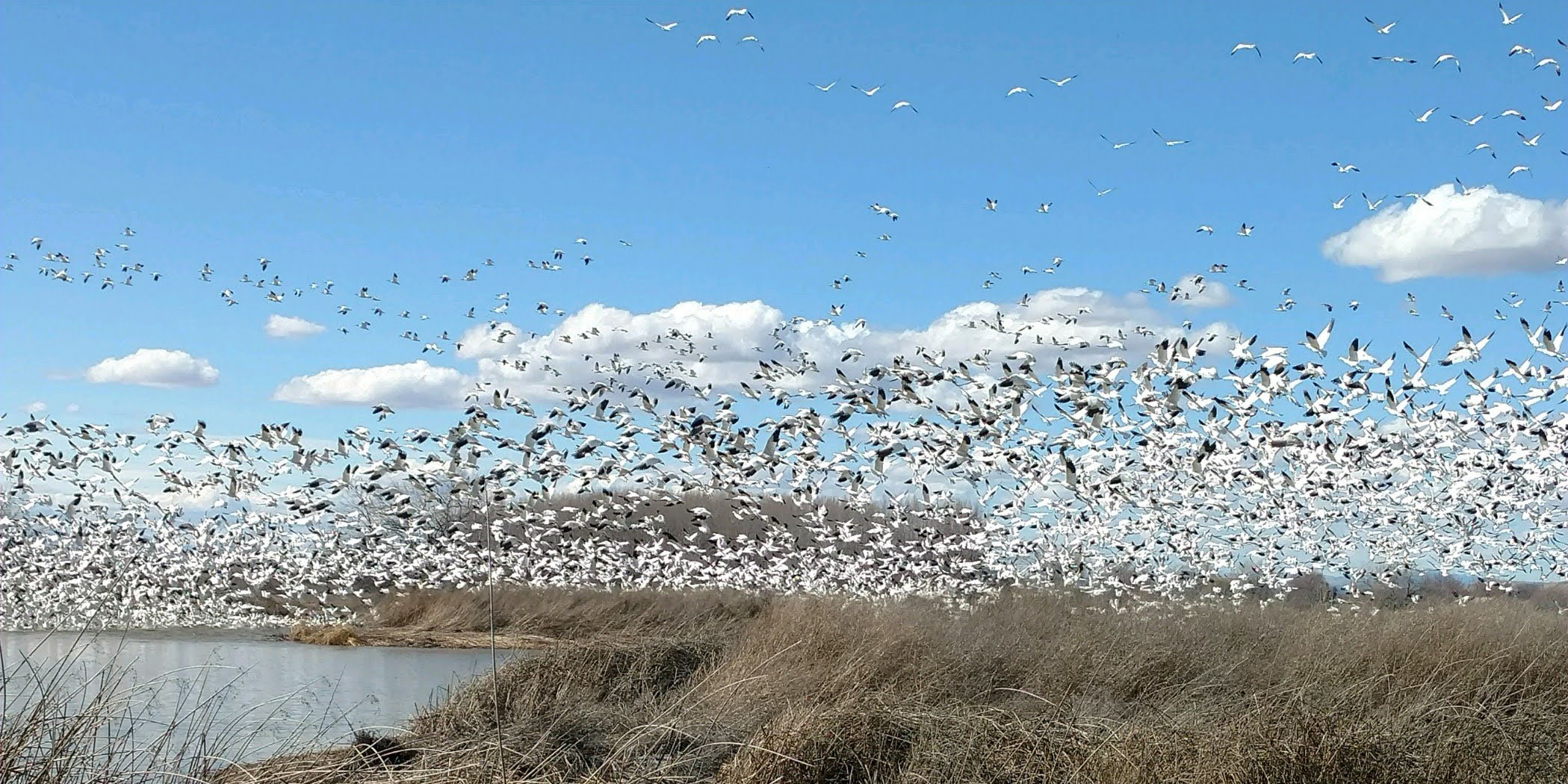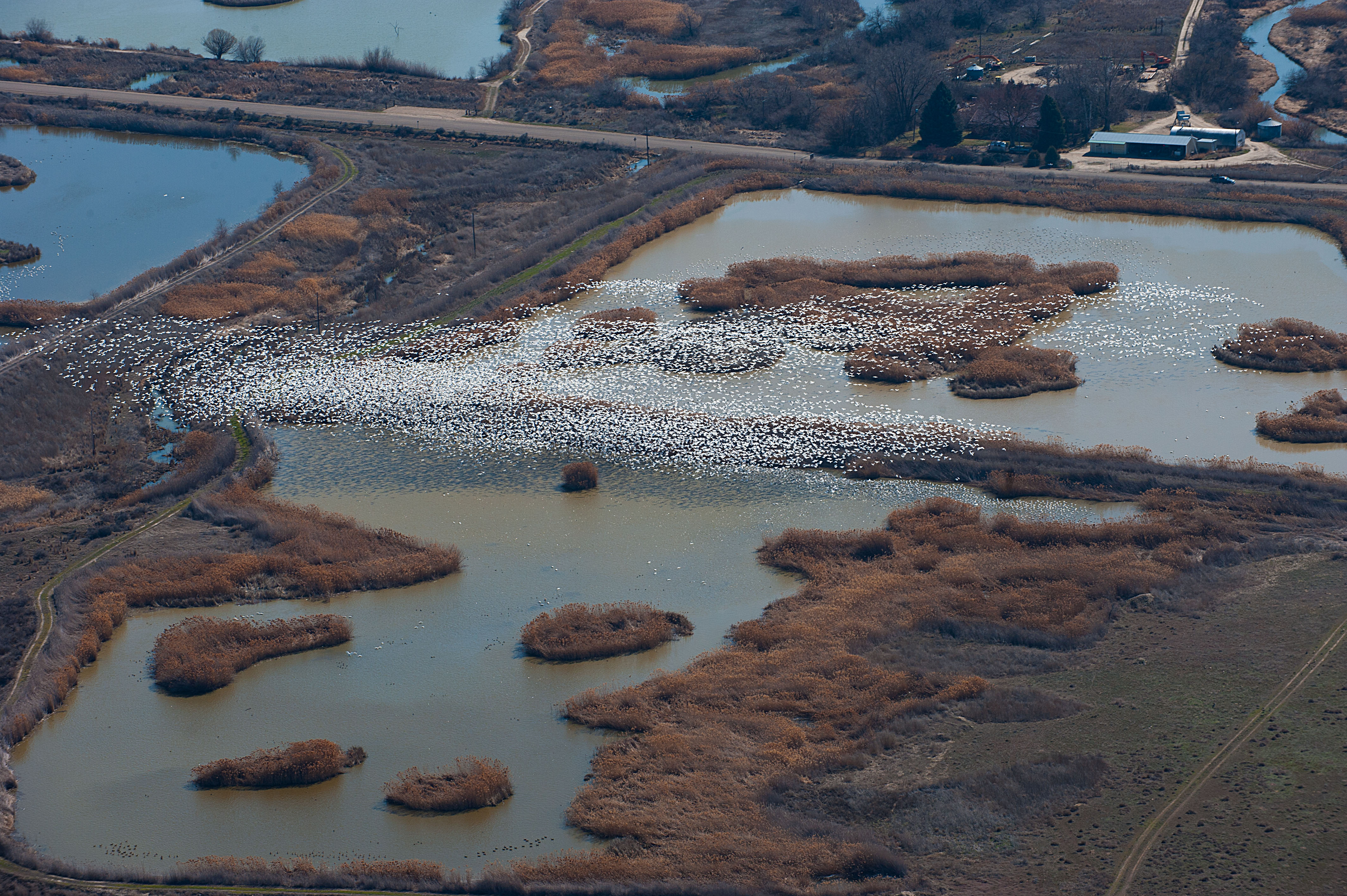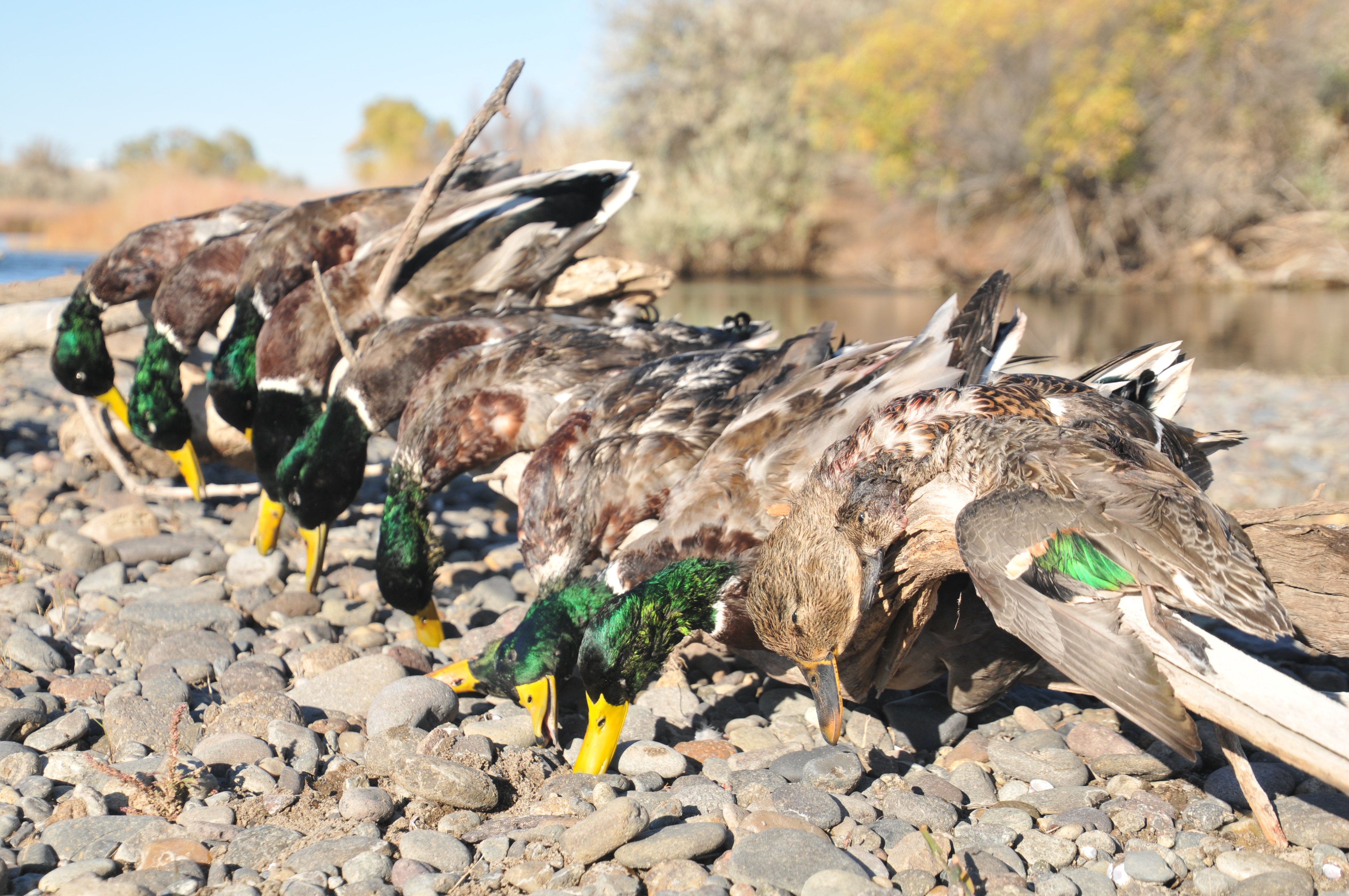The Snake River has received much acclaim as the go-to public land duck hunting destination in Idaho, but it’s certainly not the only place where hunters have an accessible place to hunt waterfowl. About two-thirds of Fish and Game's Wildlife Management Areas are managed with waterfowl in mind, providing food and resting areas for migrating waterfowl.
Fish and Game has 31 WMAs throughout the state, 20 of which can provide good-to-great waterfowl hunting when conditions are right. These WMAs vary greatly in size and are spread out through five of Fish and Game’s seven regions, including the Panhandle, Southwest, Magic Valley, Southeast, and Upper Snake. Most of them have options for quality walk-in access, and portions can be hunted successfully with limited decoys and without a dog.
WMA waterfowl hunting: The big picture
Waterfowl abundance is generally dependent upon weather patterns, and timing of the fall and winter migrations. Because WMAs are so geographically varied, hunting opportunities differ from region to region, and even between WMAs within a region.
As a general rule, WMAs in the northern and eastern part of the state tend to have shorter windows for waterfowl hunting due to an earlier freeze-up, and most of the hunting takes place prior to Thanksgiving. After that, most waterfowl shift to rivers that don't freeze, or freeze later. Waterfowl congregating in those areas often migrate out when temperatures get frigid and the birds move on to warmer climates inside and beyond Idaho. Waterfowl hunters in the Panhandle and Upper Snake regions should know that grizzly bears are active in the fall during the early part of the waterfowl season, and should take precautions and be "bear aware."
WMAs in southern Idaho tend to have longer windows for waterfowl hunting, and many can be hunted throughout the season, depending on local conditions.
Here is a look at the WMAs available to waterfowl hunters in Southwest Idaho. Follow the links for a more in-depth information about each individual WMA, along with maps and other important information.
Keep in mind that the acreages listed for the Wildlife Management Areas encompass the whole WMA, not just the portions suitable for waterfowl hunting. Wetland areas are typically a fraction of the total acreage, and waterfowl hunting on Fish and Game's WMAs is a popular activity – meaning many of these see high usage during duck season, particularly on weekends and holidays. Don't expect to be alone at any particular WMA, and expect competition from other hunters for prime hunting spots.
Hunters should also keep in mind that much of the waterfowl season overlaps with pheasant season, and many of WMAs are also popular pheasant hunting destinations. Fish and Game stocks pheasants at more than half of the WMAs listed below, and there are special rules for pheasant hunters on those properties, including a 10 a.m. start time for shooting hours.
Duck hunters on these properties will often find less competition, and the best waterfowl hunting, before 10 a.m. If duck hunters are planning on pheasant hunting as well, they need to follow those rules, and also not be in possession of shotgun shells containing lead shot while they are waterfowl hunting.
Before hunters head out, they should check out the current Idaho Migratory Game Bird Seasons and Rules brochure and remember that they are required to possess/use:
- A valid Idaho hunting license or hunting passport
- Migratory Bird (HIP) Permit
- Federal Migratory Bird (Duck) Stamp for all hunters 16 years or older
- Nontoxic shot
Waterfowl hunting at Southwest Region WMAs
Payette River WMA -- 1,066 acres
This WMA consists of scattered parcels on the Payette and Snake rivers, which includes a total of under 100 acres of ponds, along with islands in the Payette River that are popular with waterfowl hunters. The hunting on the river islands, and the WMA in general, tends to heat up when other water in the area freezes. Canada geese and mallards are the most common species, but other waterfowl including wood ducks, gadwall, widgeon, green-winged teal and common goldeneye are also found here.
The WMA includes three main sections – Birding Islands, Emmett segment, and Little Banks Island. Public parking lots and boat launches are available, but the WMA is closed to vehicle traffic and only allows only foot or boat travel.

The Birding Islands segment lies approximately 9 miles east of the town of Payette. It includes several islands in the Payette River and adjacent sites on the mainland, along with nine waterfowl production ponds that are open to hunters during the season. The ponds are accessible to walk-in hunters, as are sites on the mainland, and a many of the islands can be accessed through wadeable portions of the river. Some water is shallow enough to retrieve ducks in waders, but a dog is needed in others.
The Emmett Segment is a 200 acre piece located approximately 3 miles west of Emmett, Idaho, on the Payette River. This section includes a group of scattered islands, with good sloughs and side channels to hunt on, making it a highly used waterfowl production area. Hunters will need a boat -- a kayak or canoe will do -- to access the popular inner islands, but there are a couple spots where hunters can set up on the main bank.
The 21-acre Little Banks Island segment is located in the Snake River, about one mile south of the confluence of the Snake and Payette Rivers, and provides hunter access and waterfowl production habitat. You'll need a watercraft capable of safely navigating the Snake River to access this parcel.
Montour WMA — 1,350 acres
Montour WMA is located along the Payette River in the Montour Valley in Gem County, 9 miles east of Horseshoe Bend and Highway 55 and one mile South of Highway 52.

Natural and created wetlands and ponds within the WMA provide food, cover, nesting, and resting habitat for waterfowl.
Fish and Game, in cooperation with the Bureau of Reclamation, constructed five waterfowl production ponds on the WMA totaling about 48 acres. The Payette River provides open water for wintering waterfowl during the colder periods when all nearby ponds, marshes and other waters are frozen. Waterfowl hunting can be good, both in the ponds and along the river, depending on the weather conditions, but space on the ponds is fairly limited.
A word of caution for waterfowl hunters: while the ponds appear shallow, half of the water is between three and five feet deep, and the bottom can be soft. You may need a boat to hunt the inner islands on the ponds. Even if you're hunting from the outer banks and have a pair of chest waders, retrieving birds yourself can get a little dicey. If you don't have a duck dog (or a wind to push ducks closer to the bank), you may want to look elsewhere.
Fort Boise WMA -- 1,209 acres
Fort Boise WMA is located five miles northwest of Parma in Canyon County, and includes wetland, riparian and upland habitat on the north bank of the Boise River at the confluence with the Snake River. Also encompassed in the WMA is the 330-acre Gold Island, in the Snake River. Fish and Game recently completed efforts to enhance nearly 400 acres of wetland habitat on the WMA, and ponds are flooded and ready to hunt for the season.

Shallow water and thick riparian vegetation make Fort Boise and the nearby 680-acre Roswell Marsh Wildlife Habitat Area waterfowl havens. Both areas provide nesting and winter habitat for waterfowl, and important habitat for migrating birds like snow geese and white-fronted geese. Mallards and gadwall are common waterfowl nesting species, and Canada geese, goldeneyes, widgeon, northern pintails and wood ducks can also be found here.
Walk-in access opportunities on Fort Boise include nine waterfowl ponds that are open during the hunting season, as well as bank access to the Boise and Snake Rivers. Hunters will need a watercraft capable of safely navigating the Snake River to access Gold Island.
Roswell is divided into two sections -- a marsh and an upland portion. Most waterfowl opportunity is limited to the 200 acre marsh portion, and all of it is walk-in access only. The marsh portion is open for hunting Thursdays, Fridays and Saturdays only. The ponds are relatively small so space is limited for hunters.
C.J. Strike WMA -- 11,008 acres
C.J. Strike Wildlife Management Area is an important stop-over location for waterfowl during spring and fall migrations, providing critical food for ducks and geese migrating to nesting or wintering grounds, as well as an excellent hunting opportunity for waterfowlers. Recent improvements at the WMA have improved waterfowl habitat and opportunities for hunters.

This huge WMA is located along the Snake and Bruneau Rivers south of Mountain Home. In addition to wetlands, rivers, and the large reservoir, the lands adjacent to the WMA are made up of agricultural fields and irrigated pasture, making C.J. Strike WMA an ideal location for waterfowl. The area typically holds 30,000 to 80,000 ducks and geese throughout the season.
The majority of the harvest in this area consists of mallards and Canada geese, although other waterfowl species routinely show up in the harvest; American wigeon, northern pintail, American green-winged teal, gadwall, and wood ducks. There is also opportunity to harvest goldeneye (Barrow’s and common), and other diving ducks, although these species typically prefer the Snake River.
Weather typically begins to turn cold during mid-November and decent numbers of ducks and geese start arriving. However, quality hunting can be had for those willing to scout throughout the season.
The WMA is divided into seven management segments, each of which has different habitat. Here is a more detailed look at some of the hunting opportunities available in those segments. Hunters should be prepared to pack in good distances because there are few roads open to access the interior, but there are numerous parking lots spread throughout the WMA, as well as boat launches.
Hunters should also be aware that habitat improvements are planned for this winter at the Ted Trueblood Wildlife Habitat Area segment of C.J. Strike near Grandview, and two of the WHA’s three ponds will be dry for the 2021-22 waterfowl seasons.

